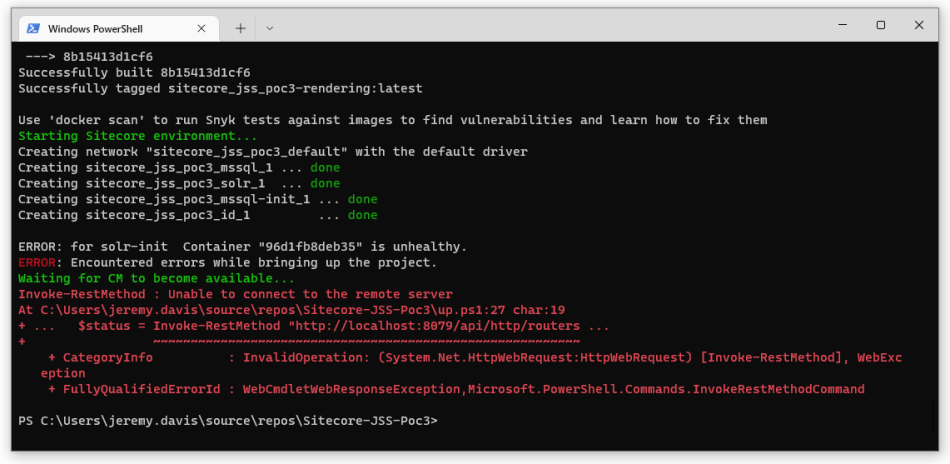Your Java Application in Docker Fails on HTTP and How to Fix It
 Tuanhdotnet
Tuanhdotnet4 min read

1. Understanding the Problem: Why HTTP Errors Occur in Dockerized Java Applications
Java applications inside Docker containers often face HTTP-related failures, typically manifesting as connection timeouts, unreachable hosts, or misrouted traffic. These issues can be broadly categorized into networking, application configuration, and Docker-specific constraints.
1.1 Misconfigured Ports
Docker containers communicate via explicitly mapped ports. If your Java application exposes an HTTP endpoint but you forget to publish the port, the application won’t be reachable.
docker run -d --name my-java-app my-java-app:latest
Without the -p flag, the container’s internal port is isolated.
Fix:
Always map the container's internal port to the host machine:
docker run -d -p 8080:8080 --name my-java-app my-java-app:latest
1.2 Incorrect Network Settings
Docker uses different networking modes such as bridge, host, and none. The default bridge mode often causes issues in cross-container or host-to-container communication.
Fix:
For local development, use the host network mode:
docker run --network host -d my-java-app:latest
Or define a custom bridge network:
docker network create my-network
docker run --network my-network -d my-java-app:latest
1.3 Java Binding to localhost
Java applications may bind only to localhost by default. In a Docker container, this restricts access to the container itself.
server.address=127.0.0.1
server.port=8080
Fix:
Update the configuration to bind to all interfaces:
server.address=0.0.0.0
server.port=8080
2. Debugging HTTP Failures in Dockerized Java Applications
2.1 Logging HTTP Failures
A common pitfall in debugging Dockerized applications is insufficient logging. Java applications using frameworks like Spring Boot provide built-in logging configurations.
Add Logging in Application.properties:
logging.level.org.springframework.web=DEBUG
Run the application and observe the logs:
docker logs my-java-app
2.2 Analyzing Docker Logs
Sometimes, the issue lies in Docker rather than the application. Use Docker logs for insights:
docker inspect my-java-app
docker logs my-java-app
3. Advanced Fixes and Optimizations
3.1 Fixing Resource Limitations
By default, Docker containers have limited resources. Insufficient CPU or memory can cause HTTP requests to fail intermittently.
Solution: Allocate more resources:
docker run -d -p 8080:8080 --memory=512m --cpus=1 my-java-app:latest
3.2 Health Checks
Implementing health checks ensures that your container is always in a running state. Docker can automatically restart a failed container if a health check is defined.
Add Health Check in Dockerfile:
HEALTHCHECK --interval=30s --timeout=5s CMD curl -f http://localhost:8080/health || exit 1
3.3 Optimizing Docker Networking for Microservices
For multi-container setups, prefer orchestration tools like Docker Compose or Kubernetes. Example Compose file:
version: '3.8'
services:
app:
image: my-java-app:latest
ports:
- "8080:8080"
networks:
- app-network
db:
image: postgres:latest
networks:
- app-network
networks:
app-network:
driver: bridge
4. Testing the Solution
After implementing the fixes, always test thoroughly:
Test Locally
Ensure the HTTP endpoint is accessible:
curl http://localhost:8080
Test Cross-Container Communication
If running a microservices setup, validate communication between containers:
docker exec app curl http://db:5432
Automated Integration Testing
Use testing frameworks like Testcontainers to simulate Docker environments during testing:
@Test
public void testApplicationRunning() {
try (GenericContainer<?> app = new GenericContainer<>("my-java-app:latest")
.withExposedPorts(8080)) {
app.start();
String response = new RestTemplate().getForObject("http://" + app.getHost() + ":" + app.getMappedPort(8080), String.class);
assertNotNull(response);
}
}
5. Conclusion
Troubleshooting HTTP issues in Dockerized Java applications can be challenging but rewarding. By understanding Docker networking, configuring Java applications properly, and leveraging logging and health checks, you can build robust and reliable systems.
If you encounter other issues or have specific questions, feel free to leave a comment below. Let’s debug together!
Read more at : Your Java Application in Docker Fails on HTTP and How to Fix It
0
Subscribe to my newsletter
Read articles from Tuanhdotnet directly inside your inbox. Subscribe to the newsletter, and don't miss out.
Written by

Tuanhdotnet
Tuanhdotnet
I am Tuanh.net. As of 2024, I have accumulated 8 years of experience in backend programming. I am delighted to connect and share my knowledge with everyone.